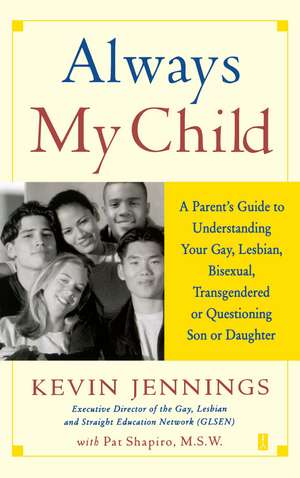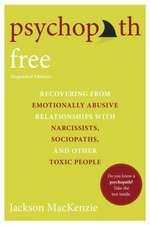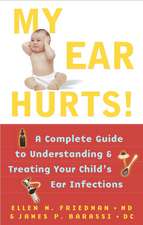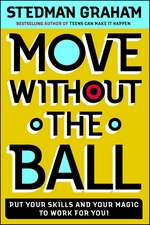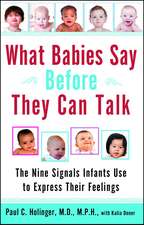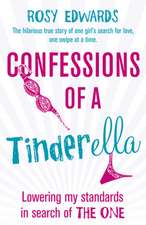Always My Child: A Parent's Guide to Understanding Your Gay, Lesbian, Bisexual, Transgendered, or Questioning Son or Daughter
Autor Kevin Jennings Cu Pat Shapiroen Limba Engleză Paperback – 2 ian 2003
Parents whose children are gay, lesbian, bisexual, transgender or who are going through a "questioning phase" are often in the dark about what their children face every day. As a result, offering support that will comfort and fortify them feels like solving a puzzle with missing pieces.
In Always My Child, Kevin Jennings supplies the missing pieces by guiding parents through the world their child inhabits. He explains what these teens often encounter -- teasing and harassment -- and offers solutions for parents who want to better understand their LGBTQ children and learn how to protect their self-esteem. He offers advice, including how to:
- Initiate constructive communication with their child
- Respond effectively to frequently asked questions
- Recognize depression and signs of drug abuse and harassment
- Successfully advocate for their child's well-being outside the home
Always My Child makes it possible for parents to create the kind of relationship with their children that allows them to grow into emotionally healthy adults.
Preț: 134.67 lei
Nou
Puncte Express: 202
Preț estimativ în valută:
25.77€ • 26.81$ • 21.28£
25.77€ • 26.81$ • 21.28£
Carte disponibilă
Livrare economică 24 martie-07 aprilie
Preluare comenzi: 021 569.72.76
Specificații
ISBN-13: 9780743226493
ISBN-10: 0743226496
Pagini: 336
Dimensiuni: 140 x 216 x 23 mm
Greutate: 0.41 kg
Editura: Touchstone Publishing
Colecția Touchstone
ISBN-10: 0743226496
Pagini: 336
Dimensiuni: 140 x 216 x 23 mm
Greutate: 0.41 kg
Editura: Touchstone Publishing
Colecția Touchstone
Notă biografică
Kevin Jennings is cofounder and executive director of the Gay, Lesbian and Straight Education Network (GLSEN) and a Harvard graduate.
Extras
Introduction
When I was growing up in rural North Carolina in the 1970s, I honestly thought I would grow up to be President. After all, that was my birthright as an American. I lived in a country where anyone who was determined and worked hard enough could aspire to the highest office in the land. I planned to live out that American dream.
However, from an early age, I realized that something was amiss.
I knew I was gay long before I had heard that word or knew what it meant. I remember at age six or seven being more fascinated by my brother's bodybuilding magazines than by his Playboys, but somehow knowing that this was information I should keep quiet. As I grew up and came to understand what these feelings meant, I recoiled in horror from myself.
Being a boy who loved books and who shied away from grade school machismo -- a boy who didn't always conform to the gender expectations of my small-town world -- cast me out. By middle school, my classmates had labeled me the "school fag."
The relentless taunting was cruel and soul-destroying. I began to hide in the library during any unstructured time in the school day so I wouldn't be beaten up. I'd eat lunch alone in the hallway to avoid cafeteria teasing. I'd spend every Sunday night battling my "Sunday funny feeling" -- a euphemism for the fear-inspired nausea that the prospect of returning to school on Mondays always brought.
When my family moved to another small southern town in 1979, after my sophomore year, I started in a new school and decided to shed my unfortunate past. I pursued what I thought was "normal" with a vengeance. I dated every girl I could literally get my hands on, earning a well-deserved reputation as a big jerk who always tried to see how far he could get on the first date. I was the biggest teller of fag jokes and ridiculed anyone who suggested anything decent about gay people.
What I really hated was myself, and this I could not escape from, regardless of how often I got drunk or stoned, no matter how deeply I retreated into music or magazines, soaking up hours behind the locked door of my bedroom.
I never told my mom that I ate lunch alone everyday. I never revealed that my insides felt chipped away by meanness and alienation. I never let on that I thought I would never fit in anywhere. Only once, did I test the waters. I told her that I was gay and then quickly denied that it was true. That's a common thing LGBT people do. You kind of come out like a turtle, look around to see if it's safe. If it's not, you stick your head back in and scurry away.
The most important thing in my world was making my mother proud; I couldn't -- I wouldn't -- risk letting her down.
So I bore the burden of my secret shame alone, wondering if my loneliness would ever abate.
YOU KNOW WHAT TO DO
If your child is LGBTQ (lesbian, gay, bisexual, transgender or questioning -- terms we'll define later) her day-to-day experience probably mirrors what mine was. While it's true for many LGBTQ youth that there's an unprecedented level of acceptance and support, it is also true that these remain extraordinarily difficult times for young LGBTQ people.
And, like me, I bet one of the most important things for your child is pleasing you -- even when you feel like a mere blip on his or her radar.
If you are one of the millions of parents who suspect that your child is LGBTQ, or if she has just come out to you, you're probably experiencing a kaleidoscope of emotions. Chances are you have burning questions: will my child be okay? Is it my fault? Can I still be a good parent when I don't understand this at all? What am I supposed to do?
We'll cover the emotions later in the book, but for now, I want to get to your questions, so that you can relax a little.
With your support, your child will be just fine.
No, it is not your fault. It is no one's fault.
If you know how to be a good parent -- and you do -- you know how to serve your LGBTQ child, because she wants the same things that every child wants: to be loved and accepted for who she is.
There is nothing that you are supposed to do that you haven't done before. This book will teach you how to use what you already know. A lot of it is intuitive.
Trust your intuition.
While there is information in this book that may be new to you, you will be applying the skills and techniques that you've used throughout your life as a parent. These are the same skills that you used when you wanted to convey something important to your child from the time she was a toddler: don't touch the stove, don't get into a car with a stranger. Those skills will be applied to situations concerning your child being LGBTQ.
If your child has recently come out, she may no longer feel sure you still love her as much as you did before. She may doubt that you still think she's great. She doesn't automatically assume you still value her for being a star volleyball player or a triumphant student. She probably questions whether you understand what she's going through or if you have any useful guidance to offer. She may think now that all you can see is her sexuality.
So, you need to tell her clearly and often: "I love you. I think you're great. And we'll work together to overcome any challenges you face -- just like we always have." You know how to do this. You've done it for years. You make the message clear and you repeat it constantly.
It's straightforward. It's simple. And it works.
"Easier said than done," you're thinking?
Fair enough. Many parents of LGBTQ children feel that they don't know them anymore. Many have qualms and disappointments about having an LGBTQ child. Some sense a rift the size of the Grand Canyon. The trick is to not beat yourself up, to not feel defeated before you've given yourself the opportunity to grow closer to your child, which you can do, just like other parents of LGBTQ children already have. (And some of the most unlikely parents.) Always My Child will lend a hand.
Straight parents can't be blamed for not knowing how to proceed when they learn they have an LGBTQ child. You don't know how because you've never been in the position your child is in. In any of the other "minorities" in the United States -- people of color or non-Christians like Jews or Muslims, for example -- youths usually grow up with parents who are like them. When their children meet discrimination or prejudice, they can turn to their parents, who have probably shared their experiences, and receive empathy and advice. A parent can say, "There's nothing wrong with you. Be proud of who you are, just like I am." Understandably, a straight parent cannot offer the same perspective to her LGBTQ child because she'd had a different life experience. But you can learn. Always My Child is designed to help you do so.
Always My Child will also help you move to the next level of developing a strong relationship with your child. The most effective way to do that is to understand the worlds through which she moves in the course of a day, from the classroom to the bagel shop down the street; from your kitchen table to the record store where she works after school.
When you glimpse the contours of your child's sphere, you will begin truly to comprehend what she faces everyday, and giving her the support she needs will come naturally. This book, in turn, will give you guidelines for supporting her in every phase: at home with your family, at school, with her peers, and in the community.
I want to help you in recognizing all of your child's facets so that you see her for more than her sexual identity: you see her as a human being. And, I will show you how to support her so that she never feels alone.
GENDER STRAITJACKETS
To understand what your child is going through every day, we need to step back and take a bird's-eye view of society. For starters, like so many of my straight friends, you may not have realized that our culture is built around a subtle, but pervasive bias, in which the people who make up cultural institutions, such as schools and churches, and even the shops and markets we frequent, are conditioned to expect others to live and behave as if everyone were heterosexual. The first thing parents need to recognize -- which is almost impossible to see unless it is pointed out to them -- is that there is a pervasive societal idea that everyone is straight unless proven otherwise.
And that straight is better than LGBTQ.
This message, with its stereotypes and innuendos, reverberates within every LGBTQ young person. Like an incessant jackhammer outside the window, the notion that there is something wrong -- abnormal -- follows LGBTQ youth everywhere they go...and often all the way home.
When I reflect on my junior high school years now, I see how the ridicule and harassment that I blamed on my peers stemmed from the stereotypes and myths that suffuse our culture. Not that the kids who tormented me were blameless. Not at all. But kids don't like anything that deviates from "the norm." And they learn that norm from society's signals and cultural myths at a very early age: in the toys they play with, the colors they wear, the television shows they watch and the way they act in school and on the playground. Some messages are blatant, while others seamlessly invade our culture through religion, the media and yes, our very own families.
Recently we've seen tremendous change in attitudes to sexuality, sexual orientation and gender identification. In such a rapidly changing world, young people -- both heterosexual and homosexual -- are uncertain how to behave. With many floundering and looking for something familiar they can rely on, they succumb to the intense pressure from peers to squeeze themselves into what I call gender straitjackets: prescribed, stereotypical notions of what is acceptable male and female behavior.
Boys feel pressure to act macho, be tough and flaunt their dates with girls. Any deviation -- a talent in dramatic arts or a preference for dance -- brings a social penalty: they are swiftly labeled "gay" because these (and other) interests have been stereotyped as "girl" activities. Girls, too, must play a traditional part: looking and acting feminine and dating guys. They have a little more leeway than boys (girls can wear "boy" clothes like jeans), but if they are too interested in sports, don't wear makeup or show little interest in "putting out" for boys, their peers call them "dykes."
Why is homosexuality so troubling to many Americans? One reason that some people feel uncomfortable with LGBTQ people is because of the "sex" in homosexuality. In fact, that may have been the first thing you thought of when you learned your child was LGBTQ: What does he do with his friends? How does she experience pleasure? In this country, we tend to define homosexuals by their sexual behavior. We don't see heterosexuals in the same way. We see heterosexuals as people first and define them by their roles or occupations: lawyer, nurse, social worker, mother, brother. The fact that they are attracted to the opposite sex is not their defining characteristic. With time, you will be able to see your child in this broader way too.
As co-founder and executive director of Gay, Lesbian, Straight Education Network, known as GLSEN, the largest organization in the United States whose mission is to make schools safe for LGBTQ youth, I've worked with schools and communities in forty-four states on LGBTQ issues. I have encountered school principals and teachers who both wittingly and unwittingly perpetrate stereotypes. I have met well-meaning school board members who believe that an LGBTQ child who's been victimized should simply change schools but don't realize that it is the schools that need to change. I have talked to wonderful, involved, loving parents who don't notice that their child's unhappiness comes from a silent source of shame. While talking to these myriad people, I have been able to put my finger on the pulse of America and I have seen, firsthand, the way our culture and its expectations shape the real life day-to-day struggles of LGBTQ children and their families.
It's important for parents to recognize cultural myths so that they don't perpetuate stereotypes in raising their families. That's not always easy to do, however, because many parents actually want their children to fit the traditional mold. These parents are more comfortable with a conventional, conforming child who validates their lifestyle.
But this is generally not what is best for your child.
ALWAYS YOUR CHILD
When teens come out, they often question their place in their family, their school, their religion, and their community, and wonder if they still belong to any of these critical institutions. That's one of the reasons it's important for you to understand your child and her world: She needs to know she is still loved and still belongs.
While many LGBTQ youth fit in well everywhere and have a dynamism that energizes their friends and family, there are LGBTQ youth who, like me years ago, withdrew from everyone and everything, especially themselves. Adolescents today have greater knowledge, more information, and more diverse sexual experiences than previous generations. They are having sex earlier, more often and with more partners. They face social and interpersonal situations in high school that I would imagine you barely touched in your twenties. Yet, there's a paradox: today's youth are more isolated from one another and from their families and schools than any other generation. This is especially true for LGBTQ youth.
Throughout this book, I'm going to talk about the importance of young people developing a healthy identity that is consistent with who they are inside. One way to do that is to help them connect with other people, both their own age and older, who share their sexual orientation so they can understand they are not alone and that they are not freaks.
There is an important reason for doing this: isolated teens are at risk. If young people don't feel that sense of connection, chances are they are going to get in trouble. They may drink excessively and do drugs. They may develop an eating disorder. They may fail to protect themselves from pregnancy, sexually transmitted diseases and AIDS. Why should they behave differently? No one seems to care.
Yet, what convinces them otherwise isn't anything fancy. Like me, they simply want their parents' unconditional love and support, and to know that they haven't disappointed you. They want to hear, "You are always my child."
This book is designed to help the growing number of parents who either want to stand with their child, advocate for her, and help her connect to family members, friends, and special communities, or to at least get themselves to the point where they can better understand her.
A NEW GENERATION OF PARENTS
Times are changing for parents, too. One of the shifts I've seen over the seventeen years I've worked on LGBT issues is a real evolution in the attitudes of many parents. I first observed this about four or five years ago at the GLSEN Pathfinder Annual Awards, which honor students, teachers or parents for outstanding achievement in ending anti-LGBT bigotry. For many years, the students who won our top awards would come alone or with their friends. About three or four years ago, I noticed their parents were suddenly there, beaming.
I began to note who this new generation of parents was; even if they were having trouble accepting their child, they were beginning to play a role in her life, rather than try to "fix" her.
Part of the reason for the change is that so many of us know LGBTQ people today. According to a 2001 study by the Kaiser Family Foundation, 25 percent of all families say they have a family member who is lesbian, gay or bisexual. A 2001 poll by Lake, Snell, Perry & Associates, a public opinion research firm in Washington, D.C., found that 57 percent of parents say they have a co-worker who is LGBT. Eighty-one percent think children know their sexual orientation by the time they graduate from high school.
LGBTQ people are part of the world for this generation of parents, and they are increasingly prepared to accept and deal with that reality.
More and more, parents have an opportunity to connect with other parents of LGBTQ teens. You need a support network just as much as your child does. There is nothing wrong with reaching out. I'll show you how to take advantage of these opportunities for yourself and how to use them to support your child in doing so.
WHAT THIS BOOK WILL COVER
This guidebook will give you commonsense, plain English explanations of the issues and tell you specifically how to deal with them.
Early in the book, I'll set guidelines for the four essential keys to making your home a safe haven for your teen. They are:
1. Separate your issues from your child's. Discover how to recognize and put aside your own beliefs, prejudices and fears so your child's concerns can take center stage.
2. Get the facts. Find ways to inform yourself about healthy sexual development, safe sex and sexual identity issues.
3. Keep the lines of communication open. Learn when to talk and when to keep silent as well as specific techniques, such as when and how to follow up on a child's hint about sexual orientation or gender identity.
4. Create an open atmosphere. Learn specific ways to create a home that reflects tolerance for diversity.
I'll also guide you step-by-step through:
• your child's coming-out process
• the stages of your own process of acceptance
• your child's challenges at school with her peers and teachers
• advocating for your child at school
• ensuring safety on the Internet
• recognizing signs of serious trouble
Each chapter will contain specific dialogues so you know exactly what to say and when to say it. These dialogues include examples showing you what to say:
• to encourage your child to be honest with you
• to help your child break the ice and come out to you
• to tell your child's grandparent she's LGBTQ
• to help your child stand up to bullies
• to express your concern if you recognize the warning signs of a serious problem developing
The key to a happy family -- and happy children -- is the parent. Your family is the primary source of your child's self-acceptance and self-esteem. A parent's approval signals to a child that she is loved, valued and accepted. Every child wants these things, but few worry about them as intensely as children who are LGBTQ. After all, few issues are as central to teenagers' self-esteem as how they feel about their sexual selves. Feeling good about one's sexual identity is one of the most critical challenges of adolescence. And the odds are against that happening easily for LGBTQ young people in today's society.
All the research shows that the need for affirmation from parents grows more intense as children become teenagers. Adolescence is a time of healthy and exciting exploration: Who am I? What are my true interests? What makes me happy? These are questions teens must answer. Consistent acceptance and support at home is the best way for them to investigate these issues and to begin to draw some conclusions.
I hope that reading this book will be one step in the process by which you come to be able to fully embrace your LGBTQ child, help ease tensions at home, and enable you to be the kind of parent you want to be.
AUTHORS' NOTE
We will alternate by chapter between using masculine and feminine pronouns to refer to LGBTQ youth throughout the book.
We have changed the names of students and parents, who are identified by first name only, to protect their privacy. Some of their identifying information has also been modified. If someone is called by their first and last name, that name has not been changed.
The term "parents" should be read to include all caretakers, including guardians and other family members in a parenting role.
Finally, this book is particularly unusual because it explores three other issues that most other parenting books don't discuss: the concerns unique to transgender teens, questioning teens and teens of color. Each of these groups has special needs and deserves focused attention, which we have done by giving each its own chapter.
Copyright © 2003 by Kevin Jennings and Skylight Press
When I was growing up in rural North Carolina in the 1970s, I honestly thought I would grow up to be President. After all, that was my birthright as an American. I lived in a country where anyone who was determined and worked hard enough could aspire to the highest office in the land. I planned to live out that American dream.
However, from an early age, I realized that something was amiss.
I knew I was gay long before I had heard that word or knew what it meant. I remember at age six or seven being more fascinated by my brother's bodybuilding magazines than by his Playboys, but somehow knowing that this was information I should keep quiet. As I grew up and came to understand what these feelings meant, I recoiled in horror from myself.
Being a boy who loved books and who shied away from grade school machismo -- a boy who didn't always conform to the gender expectations of my small-town world -- cast me out. By middle school, my classmates had labeled me the "school fag."
The relentless taunting was cruel and soul-destroying. I began to hide in the library during any unstructured time in the school day so I wouldn't be beaten up. I'd eat lunch alone in the hallway to avoid cafeteria teasing. I'd spend every Sunday night battling my "Sunday funny feeling" -- a euphemism for the fear-inspired nausea that the prospect of returning to school on Mondays always brought.
When my family moved to another small southern town in 1979, after my sophomore year, I started in a new school and decided to shed my unfortunate past. I pursued what I thought was "normal" with a vengeance. I dated every girl I could literally get my hands on, earning a well-deserved reputation as a big jerk who always tried to see how far he could get on the first date. I was the biggest teller of fag jokes and ridiculed anyone who suggested anything decent about gay people.
What I really hated was myself, and this I could not escape from, regardless of how often I got drunk or stoned, no matter how deeply I retreated into music or magazines, soaking up hours behind the locked door of my bedroom.
I never told my mom that I ate lunch alone everyday. I never revealed that my insides felt chipped away by meanness and alienation. I never let on that I thought I would never fit in anywhere. Only once, did I test the waters. I told her that I was gay and then quickly denied that it was true. That's a common thing LGBT people do. You kind of come out like a turtle, look around to see if it's safe. If it's not, you stick your head back in and scurry away.
The most important thing in my world was making my mother proud; I couldn't -- I wouldn't -- risk letting her down.
So I bore the burden of my secret shame alone, wondering if my loneliness would ever abate.
YOU KNOW WHAT TO DO
If your child is LGBTQ (lesbian, gay, bisexual, transgender or questioning -- terms we'll define later) her day-to-day experience probably mirrors what mine was. While it's true for many LGBTQ youth that there's an unprecedented level of acceptance and support, it is also true that these remain extraordinarily difficult times for young LGBTQ people.
And, like me, I bet one of the most important things for your child is pleasing you -- even when you feel like a mere blip on his or her radar.
If you are one of the millions of parents who suspect that your child is LGBTQ, or if she has just come out to you, you're probably experiencing a kaleidoscope of emotions. Chances are you have burning questions: will my child be okay? Is it my fault? Can I still be a good parent when I don't understand this at all? What am I supposed to do?
We'll cover the emotions later in the book, but for now, I want to get to your questions, so that you can relax a little.
With your support, your child will be just fine.
No, it is not your fault. It is no one's fault.
If you know how to be a good parent -- and you do -- you know how to serve your LGBTQ child, because she wants the same things that every child wants: to be loved and accepted for who she is.
There is nothing that you are supposed to do that you haven't done before. This book will teach you how to use what you already know. A lot of it is intuitive.
Trust your intuition.
While there is information in this book that may be new to you, you will be applying the skills and techniques that you've used throughout your life as a parent. These are the same skills that you used when you wanted to convey something important to your child from the time she was a toddler: don't touch the stove, don't get into a car with a stranger. Those skills will be applied to situations concerning your child being LGBTQ.
If your child has recently come out, she may no longer feel sure you still love her as much as you did before. She may doubt that you still think she's great. She doesn't automatically assume you still value her for being a star volleyball player or a triumphant student. She probably questions whether you understand what she's going through or if you have any useful guidance to offer. She may think now that all you can see is her sexuality.
So, you need to tell her clearly and often: "I love you. I think you're great. And we'll work together to overcome any challenges you face -- just like we always have." You know how to do this. You've done it for years. You make the message clear and you repeat it constantly.
It's straightforward. It's simple. And it works.
"Easier said than done," you're thinking?
Fair enough. Many parents of LGBTQ children feel that they don't know them anymore. Many have qualms and disappointments about having an LGBTQ child. Some sense a rift the size of the Grand Canyon. The trick is to not beat yourself up, to not feel defeated before you've given yourself the opportunity to grow closer to your child, which you can do, just like other parents of LGBTQ children already have. (And some of the most unlikely parents.) Always My Child will lend a hand.
Straight parents can't be blamed for not knowing how to proceed when they learn they have an LGBTQ child. You don't know how because you've never been in the position your child is in. In any of the other "minorities" in the United States -- people of color or non-Christians like Jews or Muslims, for example -- youths usually grow up with parents who are like them. When their children meet discrimination or prejudice, they can turn to their parents, who have probably shared their experiences, and receive empathy and advice. A parent can say, "There's nothing wrong with you. Be proud of who you are, just like I am." Understandably, a straight parent cannot offer the same perspective to her LGBTQ child because she'd had a different life experience. But you can learn. Always My Child is designed to help you do so.
Always My Child will also help you move to the next level of developing a strong relationship with your child. The most effective way to do that is to understand the worlds through which she moves in the course of a day, from the classroom to the bagel shop down the street; from your kitchen table to the record store where she works after school.
When you glimpse the contours of your child's sphere, you will begin truly to comprehend what she faces everyday, and giving her the support she needs will come naturally. This book, in turn, will give you guidelines for supporting her in every phase: at home with your family, at school, with her peers, and in the community.
I want to help you in recognizing all of your child's facets so that you see her for more than her sexual identity: you see her as a human being. And, I will show you how to support her so that she never feels alone.
GENDER STRAITJACKETS
To understand what your child is going through every day, we need to step back and take a bird's-eye view of society. For starters, like so many of my straight friends, you may not have realized that our culture is built around a subtle, but pervasive bias, in which the people who make up cultural institutions, such as schools and churches, and even the shops and markets we frequent, are conditioned to expect others to live and behave as if everyone were heterosexual. The first thing parents need to recognize -- which is almost impossible to see unless it is pointed out to them -- is that there is a pervasive societal idea that everyone is straight unless proven otherwise.
And that straight is better than LGBTQ.
This message, with its stereotypes and innuendos, reverberates within every LGBTQ young person. Like an incessant jackhammer outside the window, the notion that there is something wrong -- abnormal -- follows LGBTQ youth everywhere they go...and often all the way home.
When I reflect on my junior high school years now, I see how the ridicule and harassment that I blamed on my peers stemmed from the stereotypes and myths that suffuse our culture. Not that the kids who tormented me were blameless. Not at all. But kids don't like anything that deviates from "the norm." And they learn that norm from society's signals and cultural myths at a very early age: in the toys they play with, the colors they wear, the television shows they watch and the way they act in school and on the playground. Some messages are blatant, while others seamlessly invade our culture through religion, the media and yes, our very own families.
Recently we've seen tremendous change in attitudes to sexuality, sexual orientation and gender identification. In such a rapidly changing world, young people -- both heterosexual and homosexual -- are uncertain how to behave. With many floundering and looking for something familiar they can rely on, they succumb to the intense pressure from peers to squeeze themselves into what I call gender straitjackets: prescribed, stereotypical notions of what is acceptable male and female behavior.
Boys feel pressure to act macho, be tough and flaunt their dates with girls. Any deviation -- a talent in dramatic arts or a preference for dance -- brings a social penalty: they are swiftly labeled "gay" because these (and other) interests have been stereotyped as "girl" activities. Girls, too, must play a traditional part: looking and acting feminine and dating guys. They have a little more leeway than boys (girls can wear "boy" clothes like jeans), but if they are too interested in sports, don't wear makeup or show little interest in "putting out" for boys, their peers call them "dykes."
Why is homosexuality so troubling to many Americans? One reason that some people feel uncomfortable with LGBTQ people is because of the "sex" in homosexuality. In fact, that may have been the first thing you thought of when you learned your child was LGBTQ: What does he do with his friends? How does she experience pleasure? In this country, we tend to define homosexuals by their sexual behavior. We don't see heterosexuals in the same way. We see heterosexuals as people first and define them by their roles or occupations: lawyer, nurse, social worker, mother, brother. The fact that they are attracted to the opposite sex is not their defining characteristic. With time, you will be able to see your child in this broader way too.
As co-founder and executive director of Gay, Lesbian, Straight Education Network, known as GLSEN, the largest organization in the United States whose mission is to make schools safe for LGBTQ youth, I've worked with schools and communities in forty-four states on LGBTQ issues. I have encountered school principals and teachers who both wittingly and unwittingly perpetrate stereotypes. I have met well-meaning school board members who believe that an LGBTQ child who's been victimized should simply change schools but don't realize that it is the schools that need to change. I have talked to wonderful, involved, loving parents who don't notice that their child's unhappiness comes from a silent source of shame. While talking to these myriad people, I have been able to put my finger on the pulse of America and I have seen, firsthand, the way our culture and its expectations shape the real life day-to-day struggles of LGBTQ children and their families.
It's important for parents to recognize cultural myths so that they don't perpetuate stereotypes in raising their families. That's not always easy to do, however, because many parents actually want their children to fit the traditional mold. These parents are more comfortable with a conventional, conforming child who validates their lifestyle.
But this is generally not what is best for your child.
ALWAYS YOUR CHILD
When teens come out, they often question their place in their family, their school, their religion, and their community, and wonder if they still belong to any of these critical institutions. That's one of the reasons it's important for you to understand your child and her world: She needs to know she is still loved and still belongs.
While many LGBTQ youth fit in well everywhere and have a dynamism that energizes their friends and family, there are LGBTQ youth who, like me years ago, withdrew from everyone and everything, especially themselves. Adolescents today have greater knowledge, more information, and more diverse sexual experiences than previous generations. They are having sex earlier, more often and with more partners. They face social and interpersonal situations in high school that I would imagine you barely touched in your twenties. Yet, there's a paradox: today's youth are more isolated from one another and from their families and schools than any other generation. This is especially true for LGBTQ youth.
Throughout this book, I'm going to talk about the importance of young people developing a healthy identity that is consistent with who they are inside. One way to do that is to help them connect with other people, both their own age and older, who share their sexual orientation so they can understand they are not alone and that they are not freaks.
There is an important reason for doing this: isolated teens are at risk. If young people don't feel that sense of connection, chances are they are going to get in trouble. They may drink excessively and do drugs. They may develop an eating disorder. They may fail to protect themselves from pregnancy, sexually transmitted diseases and AIDS. Why should they behave differently? No one seems to care.
Yet, what convinces them otherwise isn't anything fancy. Like me, they simply want their parents' unconditional love and support, and to know that they haven't disappointed you. They want to hear, "You are always my child."
This book is designed to help the growing number of parents who either want to stand with their child, advocate for her, and help her connect to family members, friends, and special communities, or to at least get themselves to the point where they can better understand her.
A NEW GENERATION OF PARENTS
Times are changing for parents, too. One of the shifts I've seen over the seventeen years I've worked on LGBT issues is a real evolution in the attitudes of many parents. I first observed this about four or five years ago at the GLSEN Pathfinder Annual Awards, which honor students, teachers or parents for outstanding achievement in ending anti-LGBT bigotry. For many years, the students who won our top awards would come alone or with their friends. About three or four years ago, I noticed their parents were suddenly there, beaming.
I began to note who this new generation of parents was; even if they were having trouble accepting their child, they were beginning to play a role in her life, rather than try to "fix" her.
Part of the reason for the change is that so many of us know LGBTQ people today. According to a 2001 study by the Kaiser Family Foundation, 25 percent of all families say they have a family member who is lesbian, gay or bisexual. A 2001 poll by Lake, Snell, Perry & Associates, a public opinion research firm in Washington, D.C., found that 57 percent of parents say they have a co-worker who is LGBT. Eighty-one percent think children know their sexual orientation by the time they graduate from high school.
LGBTQ people are part of the world for this generation of parents, and they are increasingly prepared to accept and deal with that reality.
More and more, parents have an opportunity to connect with other parents of LGBTQ teens. You need a support network just as much as your child does. There is nothing wrong with reaching out. I'll show you how to take advantage of these opportunities for yourself and how to use them to support your child in doing so.
WHAT THIS BOOK WILL COVER
This guidebook will give you commonsense, plain English explanations of the issues and tell you specifically how to deal with them.
Early in the book, I'll set guidelines for the four essential keys to making your home a safe haven for your teen. They are:
1. Separate your issues from your child's. Discover how to recognize and put aside your own beliefs, prejudices and fears so your child's concerns can take center stage.
2. Get the facts. Find ways to inform yourself about healthy sexual development, safe sex and sexual identity issues.
3. Keep the lines of communication open. Learn when to talk and when to keep silent as well as specific techniques, such as when and how to follow up on a child's hint about sexual orientation or gender identity.
4. Create an open atmosphere. Learn specific ways to create a home that reflects tolerance for diversity.
I'll also guide you step-by-step through:
• your child's coming-out process
• the stages of your own process of acceptance
• your child's challenges at school with her peers and teachers
• advocating for your child at school
• ensuring safety on the Internet
• recognizing signs of serious trouble
Each chapter will contain specific dialogues so you know exactly what to say and when to say it. These dialogues include examples showing you what to say:
• to encourage your child to be honest with you
• to help your child break the ice and come out to you
• to tell your child's grandparent she's LGBTQ
• to help your child stand up to bullies
• to express your concern if you recognize the warning signs of a serious problem developing
The key to a happy family -- and happy children -- is the parent. Your family is the primary source of your child's self-acceptance and self-esteem. A parent's approval signals to a child that she is loved, valued and accepted. Every child wants these things, but few worry about them as intensely as children who are LGBTQ. After all, few issues are as central to teenagers' self-esteem as how they feel about their sexual selves. Feeling good about one's sexual identity is one of the most critical challenges of adolescence. And the odds are against that happening easily for LGBTQ young people in today's society.
All the research shows that the need for affirmation from parents grows more intense as children become teenagers. Adolescence is a time of healthy and exciting exploration: Who am I? What are my true interests? What makes me happy? These are questions teens must answer. Consistent acceptance and support at home is the best way for them to investigate these issues and to begin to draw some conclusions.
I hope that reading this book will be one step in the process by which you come to be able to fully embrace your LGBTQ child, help ease tensions at home, and enable you to be the kind of parent you want to be.
AUTHORS' NOTE
We will alternate by chapter between using masculine and feminine pronouns to refer to LGBTQ youth throughout the book.
We have changed the names of students and parents, who are identified by first name only, to protect their privacy. Some of their identifying information has also been modified. If someone is called by their first and last name, that name has not been changed.
The term "parents" should be read to include all caretakers, including guardians and other family members in a parenting role.
Finally, this book is particularly unusual because it explores three other issues that most other parenting books don't discuss: the concerns unique to transgender teens, questioning teens and teens of color. Each of these groups has special needs and deserves focused attention, which we have done by giving each its own chapter.
Copyright © 2003 by Kevin Jennings and Skylight Press
Cuprins
CONTENTS
INTRODUCTION
1. YOU AND YOUR TEEN: Understanding Your Issues, Making Your Home a Safe Harbor
2. YOUR TEEN AND SEXUALITY: A Frank Look at the World of Today's Teen
3. YOUR TEEN AND SOCIETY: How Cultural Messages about Gender and Sexuality Affect Your Teen
4. LGBTQ TEENS AND THEIR FRIENDS
5. THE GAY, LESBIAN AND BISEXUAL TEEN
6. THE TRANSGENDERED TEEN
7. THE QUESTIONING TEEN
8. LGBTQ YOUTH OF COLOR
9. OUTSIDE THE HOME: Advocating for Your LGBTQ Teen at School
10. DEPRESSION, DRUG ABUSE AND SUICIDE: Recognizing Signs of Trouble
11. YOUNG PEOPLE SPEAK TO PARENTS
12. CONCLUSION
APPENDIX: Guidelines for Taking Legal Action
BIBLIOGRAPHY
RESOURCES
INDEX
INTRODUCTION
1. YOU AND YOUR TEEN: Understanding Your Issues, Making Your Home a Safe Harbor
2. YOUR TEEN AND SEXUALITY: A Frank Look at the World of Today's Teen
3. YOUR TEEN AND SOCIETY: How Cultural Messages about Gender and Sexuality Affect Your Teen
4. LGBTQ TEENS AND THEIR FRIENDS
5. THE GAY, LESBIAN AND BISEXUAL TEEN
6. THE TRANSGENDERED TEEN
7. THE QUESTIONING TEEN
8. LGBTQ YOUTH OF COLOR
9. OUTSIDE THE HOME: Advocating for Your LGBTQ Teen at School
10. DEPRESSION, DRUG ABUSE AND SUICIDE: Recognizing Signs of Trouble
11. YOUNG PEOPLE SPEAK TO PARENTS
12. CONCLUSION
APPENDIX: Guidelines for Taking Legal Action
BIBLIOGRAPHY
RESOURCES
INDEX
Recenzii
Michael Thompson coauthor of Raising Cain: Protecting the Emotional Lives of Boys Kevin Jennings provides the kind of wise counsel that will help parents preserve their relationships with their children. He helps us to understand the stages of understanding through which all children and families need to pass in order to achieve family peace.
Judy Shepard executive director of the Matthew Shepard Foundation Every parent should read this book. It's a wonderful resource that I wish had been available to me.
Judy Shepard executive director of the Matthew Shepard Foundation Every parent should read this book. It's a wonderful resource that I wish had been available to me.
